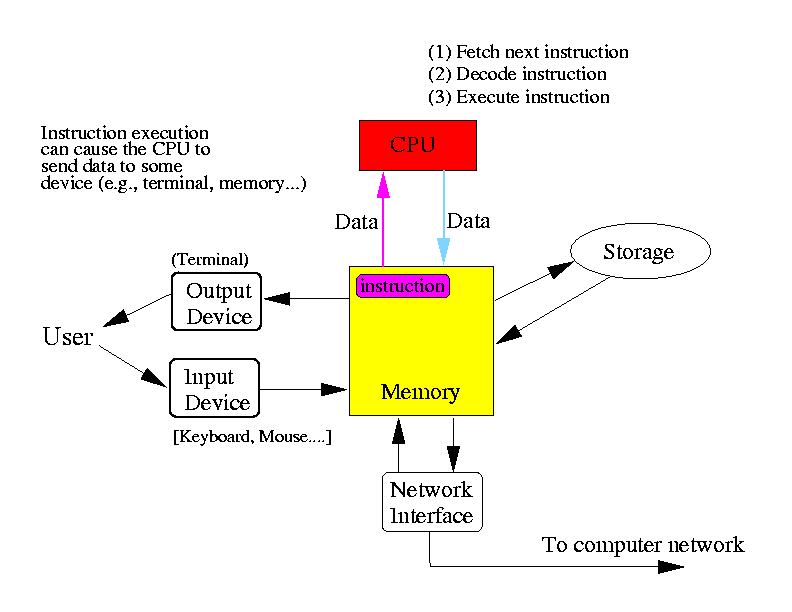
|
Example: 0 can mean add the next 2 numbers 1 can mean subtract the next 2 numbers etc, etcThese machine executable commands are called machine language
Example CPUs: Intel Pentium AMD K6, AMD Athlon Sun Micro Computer's SPARC IBM PowerPC
Many programming languages have been defined...
Example programming languages: Fortran: Formula Translator The first prog. lang., mainly used for calculation Algol 60: Algorimic Language First prog. lang. designed to write structured programs C: successor to the language BCMP First high level system programming language Pascal: designed by Niklaus Wirth Specifically designed for teaching programming Java: designed specifically with network computing in mindConclusion: programming languages are designed with some goal in mind...